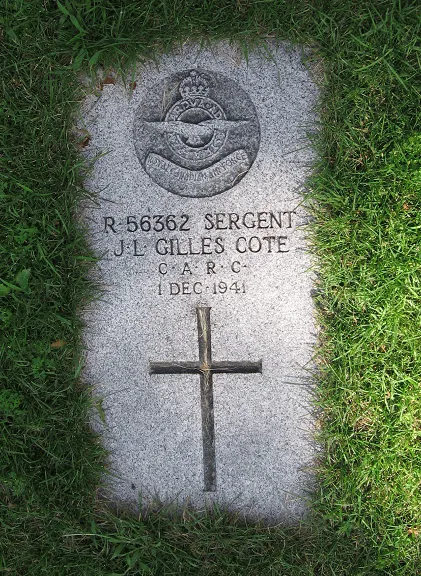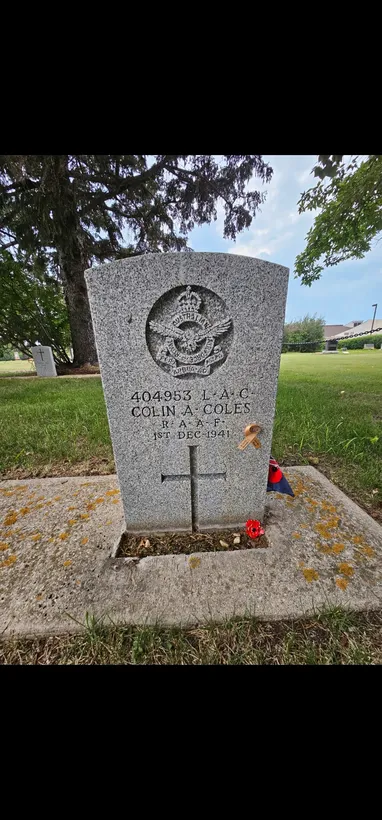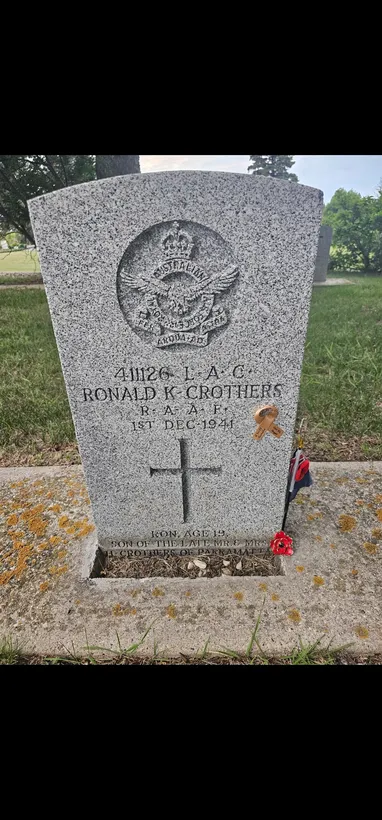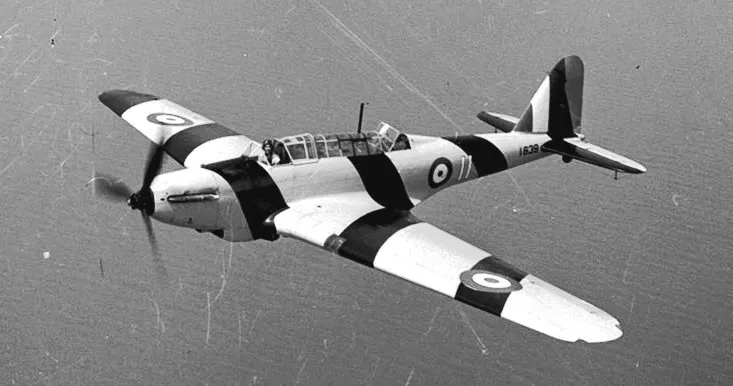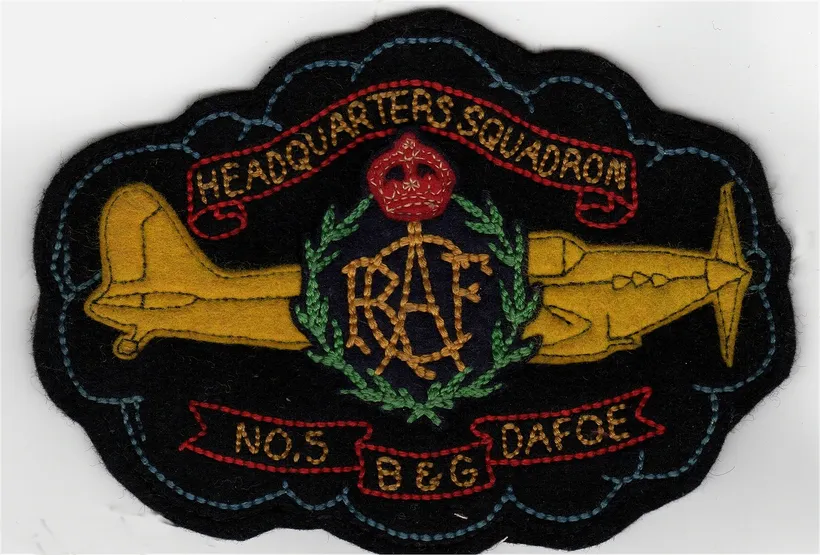(Library and Archives Canada Photo, MIKAN No. 3199067)
Fairey Battle, RCAF (Serial No. 1639), wearing target towing stripes, used in bombing and gunnery training, July 1941.
The Fairey Battle is a British designed single engine light bomber, used as a trainer in the RCAF. The Battle was powered by the same high-performance Rolls-Royce Merlin piston engine that powered various contemporary British fighters including the Spitfire. It was, however significantly heavier, with its three-man crew and bomb load. Although it was a great improvement over the aircraft that preceded it, the Battle was relatively slow and limited in range. It was only armed with two .303 in machine guns facing the rear, and was found to be highly vulnerable to enemy fighters and anti-aircraft fire.
The Fairey Battle participated in direct combat missions during early stages of the Second World War and earned the distinction of attaining the first aerial victory of an RAF aircraft in the war. In May 1940 the Battle suffered heavy losses, frequently in excess of 50 percent of aircraft sortied per mission. By the end of 1940 the type had been entirely withdrawn from active combat service, and was relegated to training units overseas, with many serving in Canada.
The RCAF received its first batch of eight Battles in August 1939, at RCAF Station Borden, Ontario. A total of 802 Battles were eventually delivered from England, serving in various roles and configurations, including dual-control trainers, target-tugs, and gunnery trainers for the Bombing and Gunnery schools of the Commonwealth Air Training Plan. Canadian use of the Battle declined as more advanced aircraft, such as the Bristol Bolingbroke and the North American Harvard were introduced. Battles remained in RCAF service until shortly after the end of the war hostilities in 1945. No. 111, 115 and No. 122 Squadrons of the RCAF flew Battles.
Fairey Battles were not manufactured in Canada, but they were assembled, serviced and modified here, including the installation of turrets at the Canadian Car and Foundry plant in Montreal.
Harold Skaarup web page with revisions
 Wikipedia Fairey Battle Bomber
Wikipedia Fairey Battle Bomber
 Harold A Skaarup Web Page
Harold A Skaarup Web Page
 Fairey Battle - Kestrel Publications
Fairey Battle - Kestrel Publications
Aircraft Images
Battle 2068
Battle Mk. I 2068
Ex RAF L5337. TOS 24 Sept 1941 at No. 8 Repair Depot, Winnipeg. To No. 2 Training Command 3 Nov 1941 for No. 5 Bombing and Gunnery School at Dafoe, Sask. Lost height in turn during a gunnery exercise and flew into ice in Quill Lake, 5 m SE of Dafoe, SK, and sank, 1 Dec 1941; Sergeant (RAAF) J.L.G. Cote, Leading Aircraftman C.A. Coles and Leading Aircraftman (RAAF) R.K. Crothers were killed; SOS 27 Dec 1941; Cat A write-off.
1941-09-24 Taken on Strength
2019-08-20
1941-December-01 Accident: 5 Bomb & Gunnery School Loc: Aerodrome Names: Coles | Cote | Crothers
1941-12-27 Struck off Strength Struck off, after Category A crash on 1 December 1941
2019-08-20
5 BGS (5 Bomb and Gunnery School)
The Bombing and Gunnery School (B&GS) offered instruction in the techniques of bomb aiming and aerial machine gunnery to Air Observers, Bomb Aimers, and Wireless Air Gunners. These schools required large areas to accommodate their bombing and gunnery ranges, and were often located near water. The Avro Anson, Fairey Battle, Bristol Bolingbroke, and Westland Lysander were the standard aircraft used at B&GS schools.
 RCAF.info - RCAF Station Dafoe SK
RCAF.info - RCAF Station Dafoe SK
 Saskatchewan Virtual War Memorial - 5 BGS History
Saskatchewan Virtual War Memorial - 5 BGS History
 Vintage Wings Ghosts Of Saskatchewan
Vintage Wings Ghosts Of Saskatchewan
 RCAF Dafoe Blog
RCAF Dafoe Blog
 YouTube - Abandoned Saskatchewan
YouTube - Abandoned Saskatchewan
Project 44 BCATP
 Project 44 BCATP
Project 44 BCATP
 YouTube - Valour Canada Aerodrome of Democracy
YouTube - Valour Canada Aerodrome of Democracy
